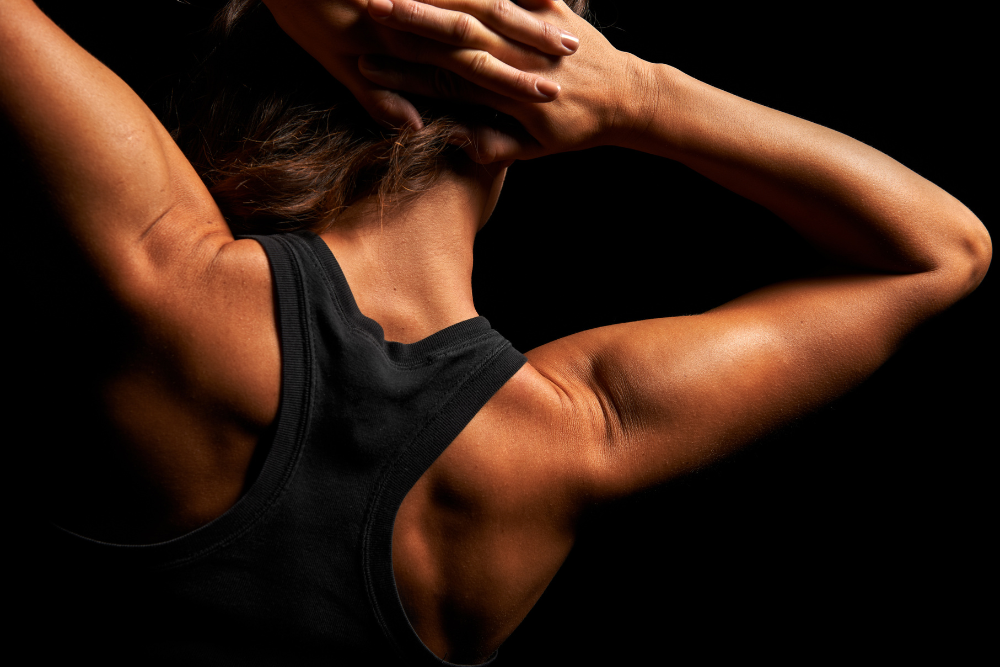Endocannabinoids: The Secret to Why Exercise Makes Us Feel Good

Julia Basso – PhD
I just returned from a wonderful vacation in Keystone, Colorado. Having lived in New Jersey for most of my life and New York City for the past 3 years, I was amazed to see the expansive views that Colorado has to offer. The Rocky Mountains provided the most beautiful landscape that I had ever seen, and it is certainly a place I will visit again and perhaps even live one day.
In this place of beauty, physical activities abounded. In fact, Colorado is a premier travel destination for not only skiing, but summer outdoor activities like hiking, mountain biking, rock climbing, white water rafting, and fly fishing, if you consider fishing a physical activity.
Feel Good Properties
Another unique aspect about Colorado is that it is the only state where the sale of recreational marijuana has been legalized. In an effort to find out more about this not-so-sub-culture, I bought a book about this topic called Weedgalized in Colorado: True Tales from the High Country by Johnny Welsh, an author from Frisco, Colorado.
Related Article: Is it as Simple as a Walk in the Park?
One rare sunny day on our vacation, we went to Strawberry Park Hot Springs in Steamboat Springs, Colorado. While lounging in a chair and reading my new book, an obvious local came up to me and asked, “So, you interested in marijuana? I said, “Well I’m a neuroscientist, so I am interested in the effects of marijuana on the brain. Really, I’m interested in the effects of exercise on the brain, and exercise causes increases in our brain’s natural chemicals that bind to the same receptors as the active ingredients in marijuana – the so-called endocannabinoids.
He looked confused and said, “We produce our own marijuana?” I told him that this is the only reason that marijuana works; because we produce endogenous cannabinoids that bind to receptors in our brain. Tetrahydrocannabinol (THC; the active ingredient in marijuana) takes advantage of this fact and binds to these same receptors, producing its potent effects. “So,” he said, “exercise is kind of like taking a hit from a joint. I laughed and responded, “Well I guess in some ways.”
Getting High
As Gretchen Reynolds of the New York Times highlights in her blog entitled, Homing in on the source of the runner’s high, science is shedding doubt on the popular idea that endorphins (or endogenous opioids) underlie the feel good effects of exercise. Rather, it might just be the same thing that is causing the high from the products sold at the Colorado dispensaries.
An elegant study by Johannes Fuss and colleagues at the University of Heidelberg in Germany combined pharmacological, genetic, and behavioral approaches to study the involvement of the endocannabinoid system in the “runner’s high” (Fuss et al., 2015). The authors state, “exercise is rewarding, and long-distance runners have described a runner’s high as a sudden pleasant feeling of euphoria, anxiolysis [decreased anxiety], sedation, and analgesia [decreased pain].” That sure sounds like the purported effects of marijuana to me, and certainly many Coloradoans are using pot for these effects, but let’s see what the authors found.
 Runner’s High
Runner’s High
First, Fuss and colleagues established that voluntary wheel running produced a runner’s high in mice. That is, compared to their sedentary counterparts, exercised mice showed decreased anxiety, decreased pain sensitivity, and enhanced sedation. At the same time, these behavioral improvements were accompanied by increases in blood levels of anandamide, one of the brain’s natural cannabinoids. These molecules are small enough to cross the blood brain barrier and directly enter the brain. When there, they bind to and act on receptors located on the brain’s cells, including neurons.
By using particular drugs called antagonists or inverse agonists (these drugs act through distinct mechanisms), scientists can block the effect of a natural or pharmacological substance. These scientists used this technique to effectively block the effect that anandamide had on the brain after exercise. So…what was the effect of exercise without its endocannabinoids? The exercised mice no longer experienced the runner’s high.
When these same experiments were conducted with the brain’s “endorphin” system, no feel good effect was found. For the first time, this work revealed that the endocannabinoid rather than the endogenous opioid system is responsible for the euphoric effect of exercise.
Related Article: Trigger Motion: Running Terms For Those New to the Game
Feel Good Molecules
Though studies have established that exercise in humans increases blood levels of endocannabinoids (Dietrich & McDaniel, 2004; Heijnen et al., 2016), not much else has been done to study the involvement of these feel good molecules on the positive effects of exercise on mood and cognitive function. Popular in the medical marijuana industry is the use of marijuana with high cannibidiol (CBD) content. CBD provides many medicinal benefits, but is less psychoactive than THC, even reversing some of the psychoactive properties of THC, thus making it a good option for patients with chronic illnesses like cancer, arthritis, chronic pain/fibromyalgia, schizophrenia, or epilepsy.
In a recent testimony to congress regarding the biology and potential therapeutic effects of CBD, Nora Volkow of the National Institute on Drug Abuse reported that CBD has anti-anxiety effects, neuroprotective and anti-inflammatory effects, analgesic effects, anti-tumor effects, anti-psychotic effects, and even anti-seizure effects. Considering its behavioral similarities to exercise, I am curious as to whether similar mechanism are at play between exercise and CBD. Certainly, I feel good about this open and exciting area for future research.
References:
Dietrich, A., & McDaniel, W. F. (2004). Endocannabinoids and exercise.British Journal of Sports Medicine, 38(5), 536-541.
Fuss, J., Steinle, J., Bindila, L., Auer, M. K., Kirchherr, H., Lutz, B., & Gass, P. (2015). A runner’s high depends on cannabinoid receptors in mice.Proceedings of the National Academy of Sciences, 112(42), 13105-13108.
Heijnen, S., Hommel, B., Kibele, A., & Colzato, L. S. (2015). Neuromodulation of Aerobic Exercise—A Review. Frontiers in psychology, 6.
Reynolds, G. (2015). Homing In on the Source of the Runner’s High. http://well.blogs.nytimes.com/2015/10/07/homing-in-on-the-source-of-runners-high/?_r=0
Volkow, N.D. (2015). The Biology and Potential Therapeutic Effects of Cannibidiol. https://www.drugabuse.gov/about-nida/legislative-activities/testimony-to-congress/2016/biology-potential-therapeutic-effects-cannabidiol
You Might Like:














